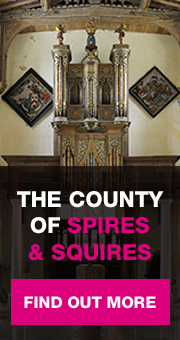24th May 2018
The Oxford Canal north of Braunston winds its way towards Rugby through emerald fields. The towpath is narrow and overhung. Drifts of cow parsley brush against me as I walk. Moorhens scatter. Duck parents shepherd their new ducklings into the safety of the middle water. A few random geese offer a rustic fanfare. Cattle are much in evidence all around, sight, sound and smell. And where the cattle are, there are flies, lots of them even on this cool bright morning. The canal is quite busy, as perhaps you'd expect so close to a major boating hub. On a two mile stretch, fourteen narrow boats pass me, in each case driven by a bloke, usually of late middle years, usually bearded, usually with a leather Stetson covering a bald patch. Below decks the women are cleaning and cooking. One or two are out front, soaking up the rays. One or two are literally Standing By Their Man, peering into the distance for signs of the Spanish Navy. I'm happy to report that most crews swap jolly hellos with me. But a couple pass by without a word exchanged, staring ahead unblinkingly, the ships of the damned. Maybe from their perspective I'm just making the place untidy.
The scene is so very pastoral, it's easy to forget the industrial strategy which brought the Oxford Canal into being. Completed in 1790, it carried coal from the colliery at Bedworth to where there wasn't any. The junction with the Grand Union, just to the west of Braunston, soon afterwards offered the possibility of cargo reaching London. Amazingly, the last mule-powered boat was still going towards the end of the nineteen-fifties, at which point the Oxford's commercial life had ended. Barbara Castle saved it from being filled in, as pride in our industrial heritage began to blossom and the leisure possibilities afforded by the waterways gained recognition.
I pass Willoughby Wharf, flirting with Warwickshire, and after the large new marina at Dunchurch Pools, turn east up a fieldpath towards Barby. The parish is actually 'Barby with Onley', and the Parish Council is 'Barby and Onley', but Onley is yet another vanished, cleared village, the name now chiefly commemorated in the prison which sits out of sight beyond the trees which skirt the canal. Formerly it was a Young Offenders Institution, with a reputation for violence between inmates and towards staff. Now graded Cat. C, it claims to concentrate on rehabilitating adult prisoners, very often from London. But a 2016 Inspectors' report again highlighted problems with violence and the taking of psycho-active substances. Perhaps because of staff shortages, prisoners were missing out on training too. It's strange to be in the fresh air, enjoying all the English countryside has to give, knowing such complications are the daily stuff of life just a few fields away. More positively, also in 2016, the prison became a member of the Community of the Cross of Nails, an organisation which works for healing and reconciliation, and which has its origins in the post-war rebirth of Coventry Cathedral. The Christians are in there, doing what they can.
At the top of the hill I come to a farm track with the M45 away to my left in the valley. This is a motorway from the very beginnings of the system in the late 50s and early 60s. Like the similarly two-lanes-a-side M50 out near Ross-on-Wye, it remains a pleasure to drive, very straight and little trafficked. I've always imagined these were roads built partly with military needs in mind at the height of the Cold War. Either that or the predictions of traffic flow were way out. Up on the little bumpy track, I'm passed twice by Postwoman Pat (no sign of any cat, black and white, Persian or tabby) bringing the day's mailshots and bills to the farm. What a little marvel this service remains, no doubt lined up for replacement by drone delivery any day soon. At which point Jess will receive a redundancy notice as will her mistress, their distinctive red van will be cannibalised for spare parts, and every Greendale will be the poorer for it.
Nigel Fry, who I met by accident a few walks ago in Daventry's Courtyard Café, is the priest at St. Mary's, Barby. There's a long list of people I could phone to obtain access to the church, but life's too short, and today's walk is slightly longer than average, so I content myself with sitting on a bench there and eating a M&S sandwich. Googling the village to see what I'm missing, I find Wikipedia hasn't a lot to say about St. Mary's, although there's a reference to a Saxon window. So for a moment I'm tempted to file this under 'not of especial interest'. But whoa, hang on there old timer, this is still a thousand years of history we're talking here. The shades of forty generations of Barby ancestors are dancing around my chicken and sweetcorn. Let's not give in to cultural fatigue quite so quickly!
Barby is twinned with the village of Vulaines-sur-Seine. I wonder if the Vulaignots and the Barbies (?!) still have anything to do with each other - twinning is less fashionable these days (an early indicator of disenchantment with the European idea?) I hope they do. Personally I think twinning is still a Good Idea. I'm charmed to see that the first baby buggy was conceived by Mr. Maclaren in 1965 Barby to the benefit of parents ever since. The alliterative potential of Barby, baby and buggy amuse me.
I'm less amused by what happens in a field between Barby and Kilsby, the other half of Nigel Fry's patch. About four hundred metres away I see a herd of young heifers, and spot that my onward diagonal path takes me nearer them than I altogether fancy. So ignoring Pythagoras' wisdom, I take the line of least resistance but maximum distance around the field edges.
(To digress for a moment, have you picked up on the new linguistic tic, which is to do what I've just done and elevate subordinate result clauses beginning 'So...' into complete sentences? As in: Q. What are you going to do between school and university, Jason? A. So...I'm gonna spend a bit of time in Vegas before, like, taking six months out to find myself in Vietnam and Australia...
Rather as with water going round the plughole the opposite way in the southern hemisphere, of course Jason will find this changes once he/she reaches Wollamboola or Cork Hat because the Standard Young Australian, let's call him Jarrod, will reply in similar circumstances: A. Aw, look...I'm gonna spend a bit of time in Vegas before, like, taking six months to find myself in Vietnam and Earls Court.)
Back to the heifers. The bloomin' animals are eyeing me up. I can hear them whispering to each other, Well, we're not going to let him get away with that, are we lads? at just the moment I put a foot down a rut filled with putrid country muck, soaking my right foot and lower leg. I quicken my pace towards a gap in the hedge. Putting on greater speed than I could ever manage, they find the gap no obstacle at all. There are lots of them and they clearly have all kinds of juvenile bovine fun in mind. I scamper for a gate and hurl myself over it. They stand the opposite side, reproachfully: Spoilsport! We only wanted to play!
Kilsby is a workaday village, the more modern of its houses crowding up to the back of St. Faith's church. The George pub serves me a Fentiman's GB with a smile, I spend a few minutes listening to a conversation one of whose participants has clearly been working on the Yorkshire accent adopted by Sir Derek Jacobi in Last Tango in Halifax, and then drop in on St. Faith's for a quick tootle on their one-manual organ. I also spend a few minutes thinking and praying for Nigel and his congregation, who've just met a substantial bill for repairs to their tower, but are finding the yearly Parish Share hard work ( £6.5k short last year). As their leaflet says, 'How odd would our village feel without St. Faith's at its heart?
Kilsby is a traveller's landmark, and always has been, a crossroads for drovers to meet and share an ale, the locus of a 1.6 mile railway tunnel, shielding the village from the worst of the West Coast main line's noise, and the beginning of the A361's long trek down to north west Devon's Ilfracombe! It's the longest three digit road in the land.
I put my head down, grit my teeth and stride out across the fields. Today's walk was to a degree a venture in faith, and my body's feeling the stress just now. Since Glandular Fever eight (!) years ago, I experience occasional bouts of post-viral fatigue, and this week it's been on me again, making nights uncomfortable and days a bit out of focus. How it interacts with food and exercise, health maintaining drugs, alcohol and painkillers is all rather mysterious. Is the fact that I can now achieve less than I did a decade ago to do with increasing age or the fatigue? The general counsel seems to be that moderate exercise helps rather than hinders, but have I taken on more than I should today?
Increasing numbers of people are vocal about their experience of 'fatigue'. The inclination among the fit and well is sometimes in the direction of 'Get a grip...' which of course is what those who suffer from fatigue would very often wish to do. I think people's bad experiences in employment...the requirements to meet targets, even and particularly in the caring professions including teaching and the priesthood...is sometimes a factor. And so maybe is our 24/7 exposure to the media, and particularly social media. Perhaps diet and other lifestyle choices can be causative. Fatigue is boring, both for those who live with it, and those who care for them or encounter them. Moving away from the strictly pathological, do we all have shorter attention spans than previous generations? Do we all tire more quickly? And if so why? And how does fatigue relate to concepts such as 'routine', and in a church context... 'liturgy'? Yup, no typo. Liturgy not lethargy.
Ashby St. Ledgers is one of my favourite places in the whole world. The long village has beautiful vernacular building, not all of it as old as at first seems (check out the Lutyens workers' cottages opposite the excellent pub.) The fields are lush and sheep-filled. The pluperfect Manor House (also restored by Lutyens) was the scene of the Catesby/Fawkes Gunpowder conspiracy, hatched in the half-timbered gatehouse next to the church, and the church itself is an ecclesiastical mini-marvel, filled with every kind of ancient decoration and ornament. It's dedicated to the Blessed Virgin Mary and St. Leogedarius. He and Kilsby's St. Faith were both French, and both met with grisly deaths in the 7th and 4th centuries respectively, thus gaining their sainthoods.
Nat White, the new incumbent at Braunston, also has Ashby St. Ledgers in her care. My route back to Braunston takes me along what must have been the old lane from the one to the other. The track is obvious at the Braunston end, but is a fieldpath towards Ashby. As at Staverton, it's hard now to see why the old road was never developed between the two - perhaps some land dispute prevented it. Anyway, Nat has these two very different but equally lovely places to look after. Apart from a lack of available clergy, there's no reason for yoking them together. I don't know if they are already a single benefice or whether there's the intention to make them into one, but it would make no sense. (The same isn't true in Barby and Kilsby, the latter having once probably been a daughter church of the former.) This is something to come back to in other contexts...
Runs on the board: 22km. 6.5 hrs. 17 deg. C. a breeze, slightly cool at times, dying later. 28 stiles. 23 gates 11 bridges. Blossom. Birdsong (my how happy the birds have been since Spring finally came!) The buzzing of innumerable bees.
Your login details have been used by another user or machine. Login details can only be used once at any one time so you have therefore automatically been logged out. Please contact your sites administrator if you believe this other user or machine has unauthorised access.







